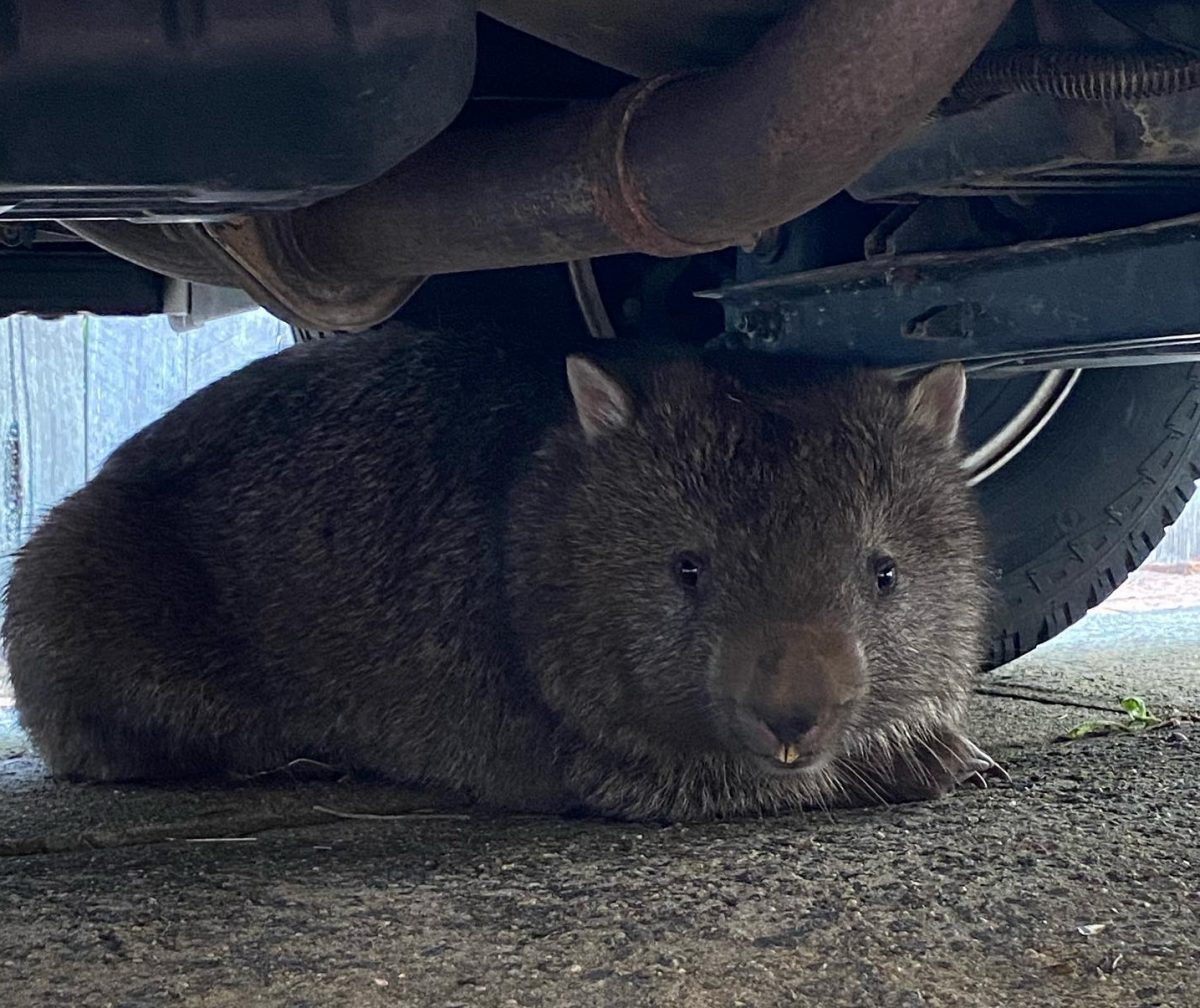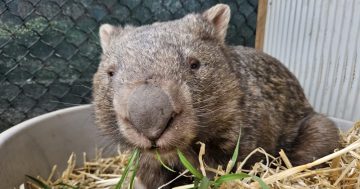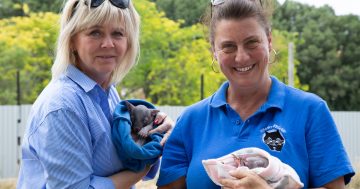
Laila, from the Snowy Mountains, is just one of the wombat joeys being looked after by Wombat Rescue carers in the ACT. Photo: Claire Fenwicke.
During flooding rains we’re warned to look out for debris washed onto the roadways, but have you been looking for animals under your parked cars?
As rivers rise and burrows flood, wombats in Canberra and surrounds have been forced to find alternative sources of shelter.
Wombat Support and Rescue NSW/ACT founder Yolandi Vermaak said the situation was getting exponentially worse.
“Every time we have a rain event now, it’s already so saturated, it just adds to the water in their homes,” she said.
Generally when there is a large amount of rain, water infiltrates the burrows slowly and gives the animals time to get out.
However, with the water table already full, rivers are rising in a matter of minutes whenever rain falls.
“If they’re out grazing at night, they have a chance,” Yolandi said.
“But if it rises immediately, they become trapped and drown. We’ve lost hundreds of wombats because of the flooding.
“People thought bushfires were worse, but it’s definitely the flooding.”
Wombats also traverse our stormwater drains and find themselves in trouble when heavy rains arrive.
While they can swim for a time, the turbulent water makes it almost impossible for them to reach dry land.
“Every time there’s a flood I find dead wombats in the lakes and weirs,” Yolandi said.
“Recently I went out to a wombat which had drowned in Tuggeranong Lake.”
She said it wasn’t just water pouring into the entrances. As the water table rose, it seeped into the deeper parts of the animals’ home.
“It’s insane, I have a burrow out the backyard that’s flooded from underneath, they dig until they hit the water table,” Yolandi said.
As a result, some wombats are going into sheds and garages, or hiding under trailers or cars, to seek shelter and feel safe.

This wombat was found seeking shelter under a parked car in Latham after his home on Ginninderra Creek flooded. Photo: Wombat Rescue Facebook.
Yolandi said one was a young male which normally lived along Ginninderra Creek at Latham.
“I’m surprised he’s survived the busy roads and everything, but now that his burrow’s flooded he has nowhere to shelter,” she said.
“They come into suburbia as they have nowhere else to go.”
All Canberrans, particularly those living in wombat areas such as Belconnen, Weston Creek and Tuggeranong, are urged to check under their vehicles before driving off just in case an animal is seeking shelter.
You can find out how many wombats have recently been sighted in your area by accessing the Wombat Rescue map.
If you come across a wombat, keep dogs and children away to minimise their stress. Contact Wombat Rescue, who will likely come with a dog kennel to give the animal temporary accommodation.
“We usually leave them in their environment, particularly if it’s a male. He will still be the boss of his territory,” Yolandi said.
“If we take them away and then bring them back, another wombat may have moved in.
“Wombats are very territorial, and can get quite vicious with each other.”
The wombat evacuation is an issue across NSW, as the entire state is hammered by heavy rains.
“One man on the coast called about a baby wombat on his property, but no-one could get it because the land wasn’t accessible except by boat,” Yolandi said.
“Then we had to work out how to get animal milk and everything to him.”
The wet weather and lack of shelter is particularly dangerous for wombats suffering from mange, which attacks the hair follicles.
If they lose enough fur and don’t have a dry place to sleep, they can die from hypothermia.
You can also help by donating to an animal welfare group or becoming a carer.
“You don’t need to have a farm to be a carer,” Yolandi said.
“Instead of having one carer with 50 animals, a better model would be to have 50 carers with one enclosure to spread that load.”
People are urged to get in touch straight away if they have concerns about a wombat. Wombat Rescue can be reached on 0424 935 989.

More volunteers are needed to care for sick adult wombats and orphaned joeys like Louis. Photo: Claire Fenwicke.





















